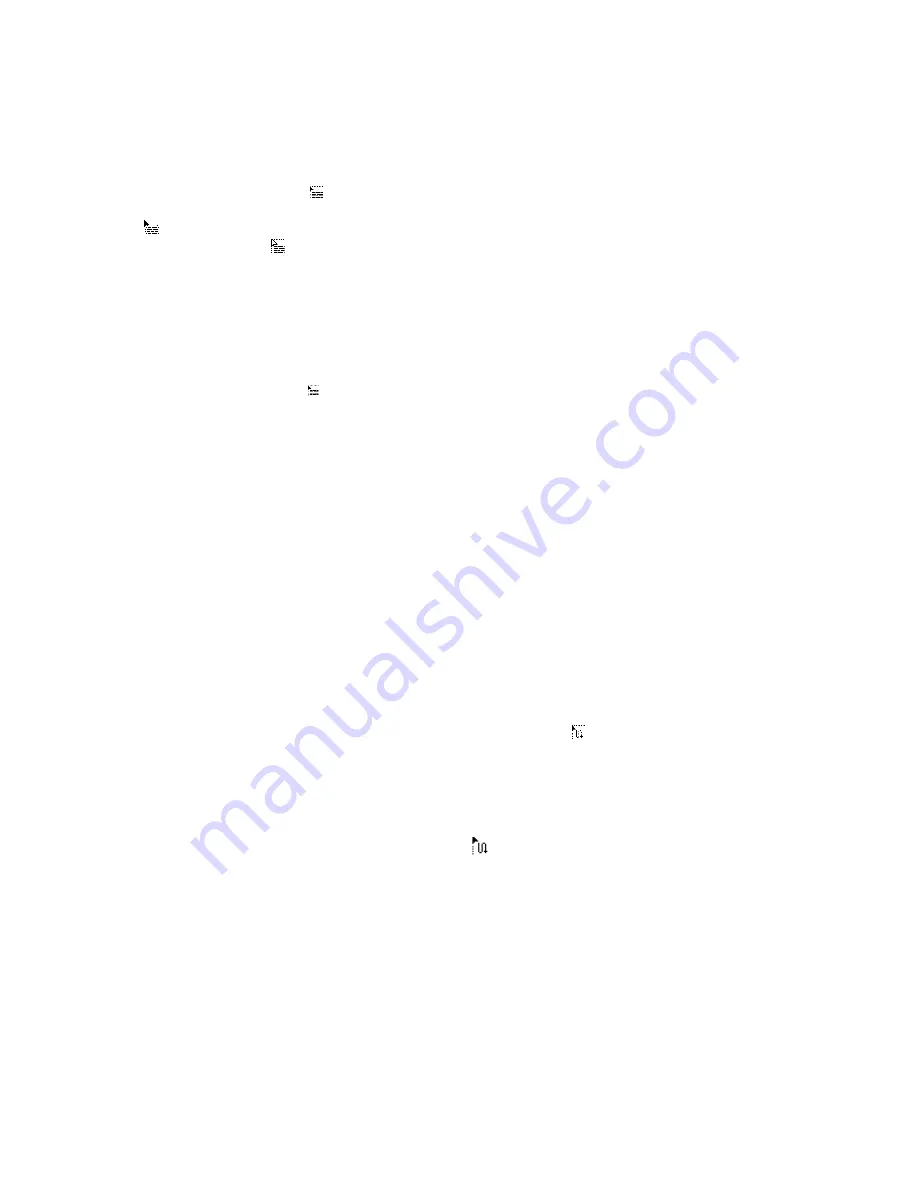
Switching from PageMaker to InDesign CS2
is embedded, not linked. If you choose to create linked text files, you can check the status of the
links in the Links palette. As is the case with placed graphics, a linked text file’s status can be
OK, Modified, or Missing, and you can use the Update Link command in the Links palette menu
to update modified or missing links. When you update a linked text file, the current text in the
InDesign CS2 document is replaced, and any formatting changes you’ve made are lost.
Flowing text
If you are placing a text file without selecting a frame, or if you click the in or out port of a text
frame, the pointer becomes a loaded text icon . When this icon is displayed, you are ready to
flow text onto your pages. When you position the loaded text icon over a text frame, parentheses
enclose the icon . When you position the loaded text icon next to a guide or grid snapping
point, the black pointer becomes white .
Three other text flow icons are available in InDesign CS2 depending on the modifier keys you
press when the loaded text icon is displayed. Make sure the icon displayed corresponds to the
method you want to use for controlling the flow of text on your pages as described in the follow-
ing sections. If you ever need to cancel a loaded text icon without placing text, select any tool in
the toolbox.
Flowing text manually
Manual text flow adds text one frame at a time . When you flow text manually, text stops flowing
at the bottom of the text frame on which you click or at the last of a series of linked frames on
that page. You must reload the text icon to continue flowing text.
To flow text manually one frame at a time, use the Place command to select a text file or click the
out port of a selected text frame. Then do one of the following:
• Position the loaded text icon anywhere within an existing frame or path, and then click. The
text flows into the frame and any other frames linked to it. Text always starts filling the frame
at the top of the leftmost column, even when you click in a different column.
• Position the loaded text icon within column guides on a page to create a text frame the width
of that column. The top of the frame appears where you click.
• Drag the loaded text icon to create a new text frame the width and height of the area you define.
If there is more text to be placed, click the out port of the last frame you created and continue
to flow text manually until all of the text has been flowed. If you place text in a frame that is
threaded to other frames, text autoflows through the threaded frames, regardless of the text flow
method you choose.
Flowing text by using semi-autoflow
Semi-autoflow works like manual text flow except that the pointer becomes a loaded text icon
each time the end of a frame is reached until all text is flowed into a document. To flow text semi-
automatically, Alt+click (Windows) or click (Mac OS) a page or frame with a loaded text
icon. The text flows one column at a time, as in manual flow, but the loaded text icon automatically
reloads after each column you place.
Flowing text automatically
Autoflow adds pages and frames until all text is flowed into your document
. To flow an
entire story automatically, hold down Shift with the loaded text icon displayed and do one of the
following:
• Click the loaded text icon within column guides on a page to create a frame the width of that
column. InDesign CS2 creates new text frames and new document pages until all text is added
to the document.
• Click inside a text frame that is based on a master text frame. The text autoflows into the docu-
ment page frame and generates new pages as needed by using the master frame’s attributes.
(See “Working with master pages” on page 18.)
If you hold down Shift+Alt (Windows) or Shift+Option (Mac OS) when autoflowing, you will not
add any new pages. You can place text only onto existing pages.






























